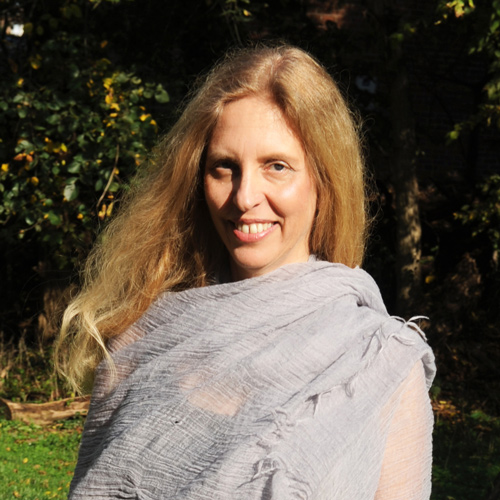By the time you read this, the neo-Nazi march in Charlottesville will likely be old news. Although news cycles now fly by fast and furious, blurring and short-circuiting our memories, I still want to talk about these young white supremacists.
I’ve been looking at video footage and photographs from that August day when they trooped through the streets of the Virginia university town, chanting, among other things, “Jews will not replace us.” I am struck by how different they are from the white supremacists I met and interviewed as a young reporter covering the U.S.-Mexico border in the late 1980s. American white supremacists come in many forms, and back then, in addition to neo-Nazis and the Klan, there were the skinheads, the Aryan Nation and innumerable spin-off groups. My beat was armed vigilantes who took over tracts of land to personally halt the Mexicans, Guatemalans and El Salvadorans then making their way north. I interviewed them in cow pastures and rangeland, in dimly lit Circle K convenience store parking lots and, sometimes, even in their homes.
They were mostly white men, typically middle-aged or older, grizzled and disgruntled. Even the young men sprinkled among their ranks seemed a more hardened, less-kempt variety, nothing like the neatly dressed young men in polo shirts and khakis—haute fascist fashion—in TV images from the Charlottesville march.
There is something else. Opportunity had long passed by the white supremacists I once covered. But many of the men and women who were captured on camera in Charlottesville are still young enough to have their lives before them. Some have even been revealed to be university campus leaders.
This is not a scientific study by any means. We can’t equate border vigilantes with neo-Nazi protesters, even if they share the same beliefs and their actions are similarly designed to draw national attention and provoke violence. Even so, it seems to me that the face of white supremacy in the United States has changed.
It is younger and more sophisticated-looking. And I can’t help thinking about how, behind each face, is a human being who has been energized to publicly express beliefs that most of us presumed had been condemned to the philosophical trash heap long ago—all while carrying guns and clubs meant to intimidate. What a profoundly deep sadness for humanity. I know that our educational, political, religious and economic institutions have failed them and that we as a society could clearly do better. At the same time, I know they are responsible for their own beliefs and actions, and that we will always have malcontents and contrarians among us.
So what to do about these younger men and women who are the new face of old prejudices? We can address disparities in our nation, and we can confront fears of change head on. We can also celebrate the vast majority of young people who not only reject prejudice but passionately stand against it. I am making a special effort to let the young people in my life know how much I admire them for that.
I marvel at the dedicated young people here at Moment. We recently dispatched one of them, our Eugene M. Grant Fellow, Ellen Wexler, to scenic Whitefish, Montana, the location of one of the first post-election white supremacist altercations. Whitefish, like the nation, was caught offguard by the vicious cyberattacks instigated last November by the neo-Nazi Daily Stormer and its fanatical acolytes against three Jewish families there. Wexler interviewed the families, who were finally ready to speak out publicly, and spoke with some of the townspeople. Although Whitefish managed to avoid the neo-Nazi march planned for its streets, healing is still ongoing.
As part of our examination of the modern face of prejudice, we also include a column by the Pulitzer Prize-winning Tyler Bridges about David Duke, the face of an earlier generation of white supremacists. There’s a column by Mark Pinsky about young American evangelicals, who, unlike their parents, may be less inclined to interpret the Bible as mandating support for Israel. You can read an excerpt of “The Darkness Is Now in the Light,” an interview with Leon Wieseltier conducted shortly after the Charlottesville debacle that was published at momentmag.com.
I also am very proud of our Daniel Pearl Investigative Journalism Initiative (DPIJI). Anti-Semitism is far from the only prejudice haunting the world. Since 2010, Moment has been giving grants to fund young writers to research and write in-depth stories on important topics, ranging from legal discrimination in the Dominican Republic against citizens of Haitian descent to racial resegregation in South Africa. In this issue, we publish “Strangers in Their Own Land,” reported by DPIJI fellow May Jeong, who traveled to Sri Lanka to investigate the violent Buddhist nationalist persecution of that country’s Muslim minority. Sri Lanka may be far away, but there are lessons there for us.
In this issue, we also profile Simon Schama, the popular British-born historian of the Jews who is as comfortable on TV as at his desk, and is a staunch defender of Zionism; we interview Max Brooks, the world’s preeminent expert on the zombie apocalypse; we delve into the origins of Hebrew acronyms; we look at Jewish humor through an epistolary book review; we preview a new exhibition of Modigliani’s early work; and we discover our rabbis’ favorite High Holiday prayers. Of course there is much more.
Wishing a sweet and reflective new year to all our readers!

